Flexible Play Systems
This thesis works towards designing a modular playground that is adaptable to a wide variety of sites and functions. I am challenging restricting playground safety guidelines in an attempt to make playgrounds more stimulating and challenging for kids of all ages. By emphasizing the importance of controlled risk and dynamic play equipment, I will hopefully be able to propose a successful playground for the future.
What Makes a Playground Successful?
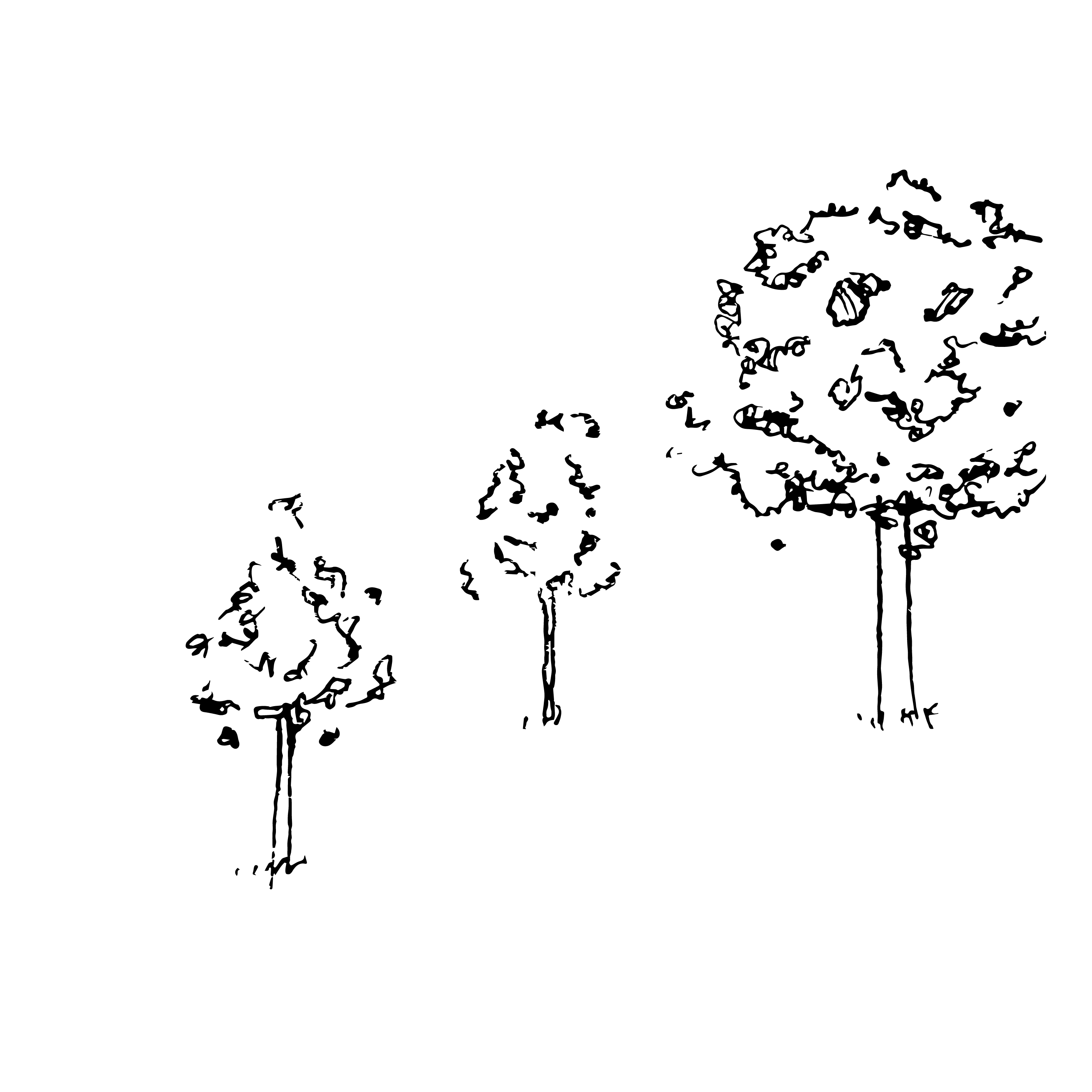

EQUIPMENT IS DESIGNED TO ADJUST TO MULTIPLE FUNCTIONS
-
Dynamic spaces with a wide range of play experiences
-
Allows for a wide range of ages and levels of experiences
-
Allows for evolution of the space

CONTROLLED RISK AND CHALLENGING ENVIRONMENTS ARE INCORPORATED
-
Surprises, high speed, rough and tumble play, hiding, heights
-
Stimulating environments that encourage problem solving
THE PLAYGROUND WORKS WITH NATURE
-
Use natural elements as part of design, as well as give kids opportunities to plant and learn
-
Plants - fast growing, easy to maintain, native species, comfortable to touch
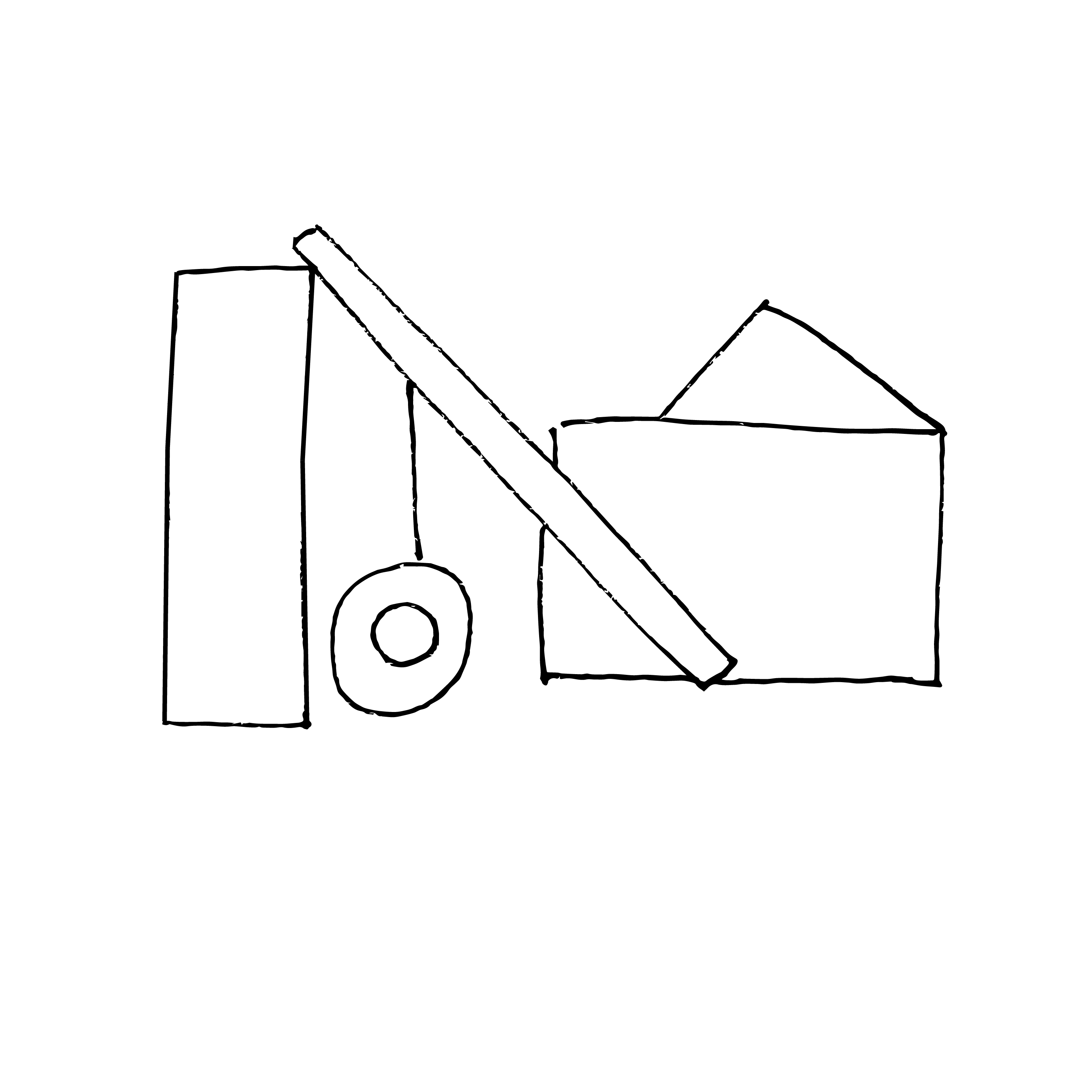

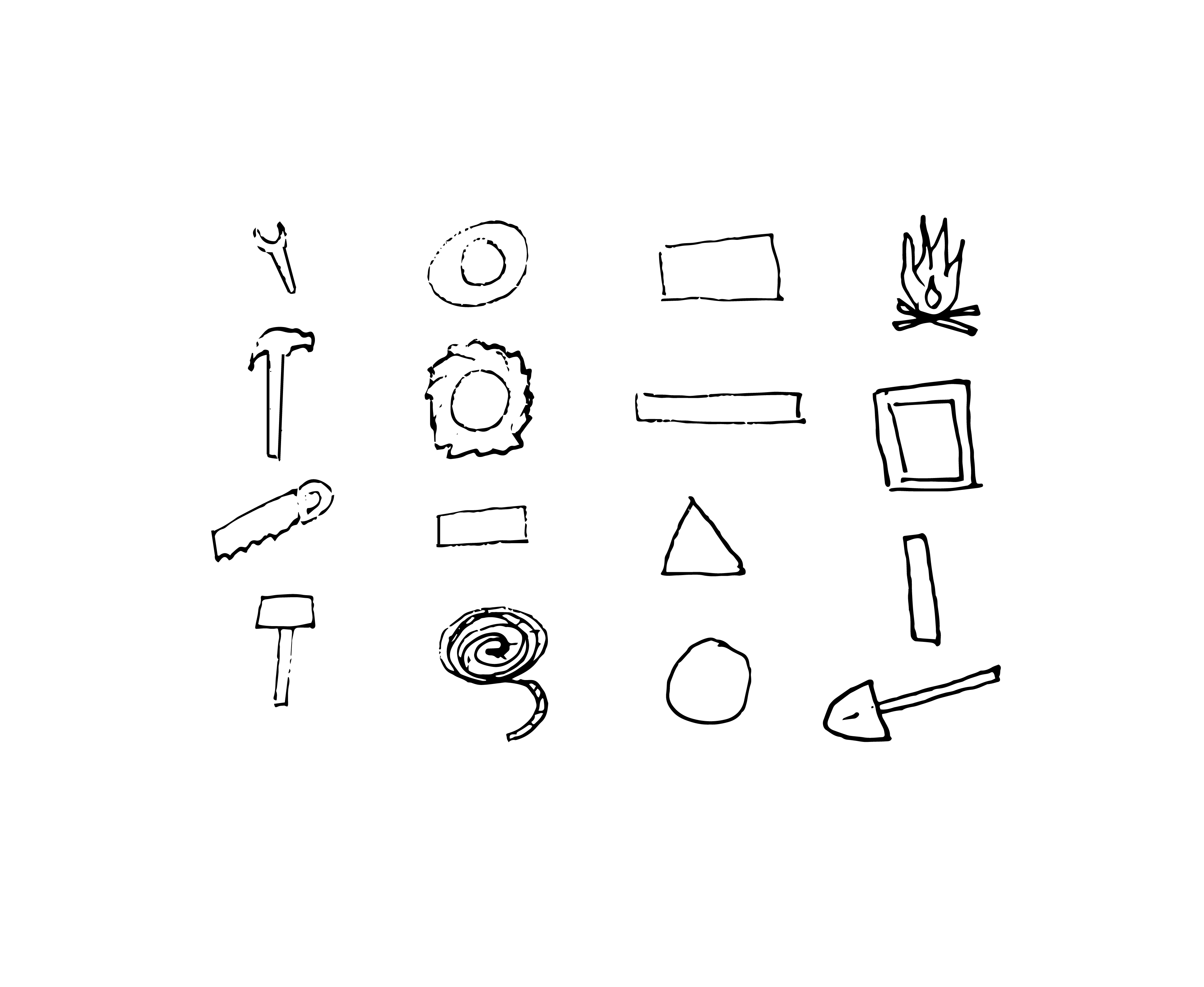
THERE IS A SENSE OF PRIDE OF SPACE
-
Children should be able to contribute to/adjust the environment to their desires
-
Use loose parts that can be used in multiple ways, give kids a sense of freedom
-
Engage with the community, understand what locals want/need, adapt to the site
LAYOUT IS DIVIDED INTO OVERLAPPING ZONES
-
Zones for different energy levels and levels of experience/age
-
Intersections of multiple age groups
-
Separate space for parents/supervisors - can see, but give kids a sense of independence
MATERIALITY AND SURFACING
-
Use surfaces that add to play value - colors, variety of textures
-
Look at function of the space and maintenance
-
Loose-fill vs. Impact absorbent vs. hard surfaces

Flexible Play System Precedents
Following the arrows:
ADVENTURE PLAYGROUND, Marjory Allen, 1940s
NOGUCHI CONCRETE LANDSCAPES, Isamu Noguchi, 1950-60s
FANTASTIC VILLAGE, Virginia Dortch Dorazio, 1954
PEPSI-COLA PLAYGROUND, Jerry Lieberman, 1960s
PLAY CUBES, Richard Dattner, 1970s
ANJI PLAY, Cheng Xueqin, 2003
CUTSYKE PLAY FOREST, Steve Warren, Estell Warren, Sutcliffe Play, 2005
WALLHOLLA PLAYGROUND, Carve, 2005
Model Inspired by Virginia Dorazio's Fantastic Village
COMPONENTS: climbing rope equipment, rock climbing walls, trampolines, ladders, greenery, swings, slides, water features, walls, and connecting pieces


Design Focusing on Function
COMPONENTS: a wide variety of pieces that can be used for a variety of locations and functions, horizontal and vertical pieces, small and light pieces and heavier pieces, loose parts, water and planting, games, speed, heights, no defined function, open space, hiding space

TESTING THE PLAYGROUND KIT OF PARTS IN DOWNTOWN CHARLOTTESVILLE
The kit of parts can adapt to a wide variety of functions and site typologies. This system is tested on a site on the downtown mall in Charlottesville. The site consists of a horizontal empty lot next to the abandoned structure of a hotel. A neighboring alleyway is used to test the verticality of the system. Two to three playgrounds are tested within the sites to accommodate a variety of functions. The empty lot focuses primarily on the growth of the community and skill levels over time, and the alleyways focuses on seasonal and short term changes.
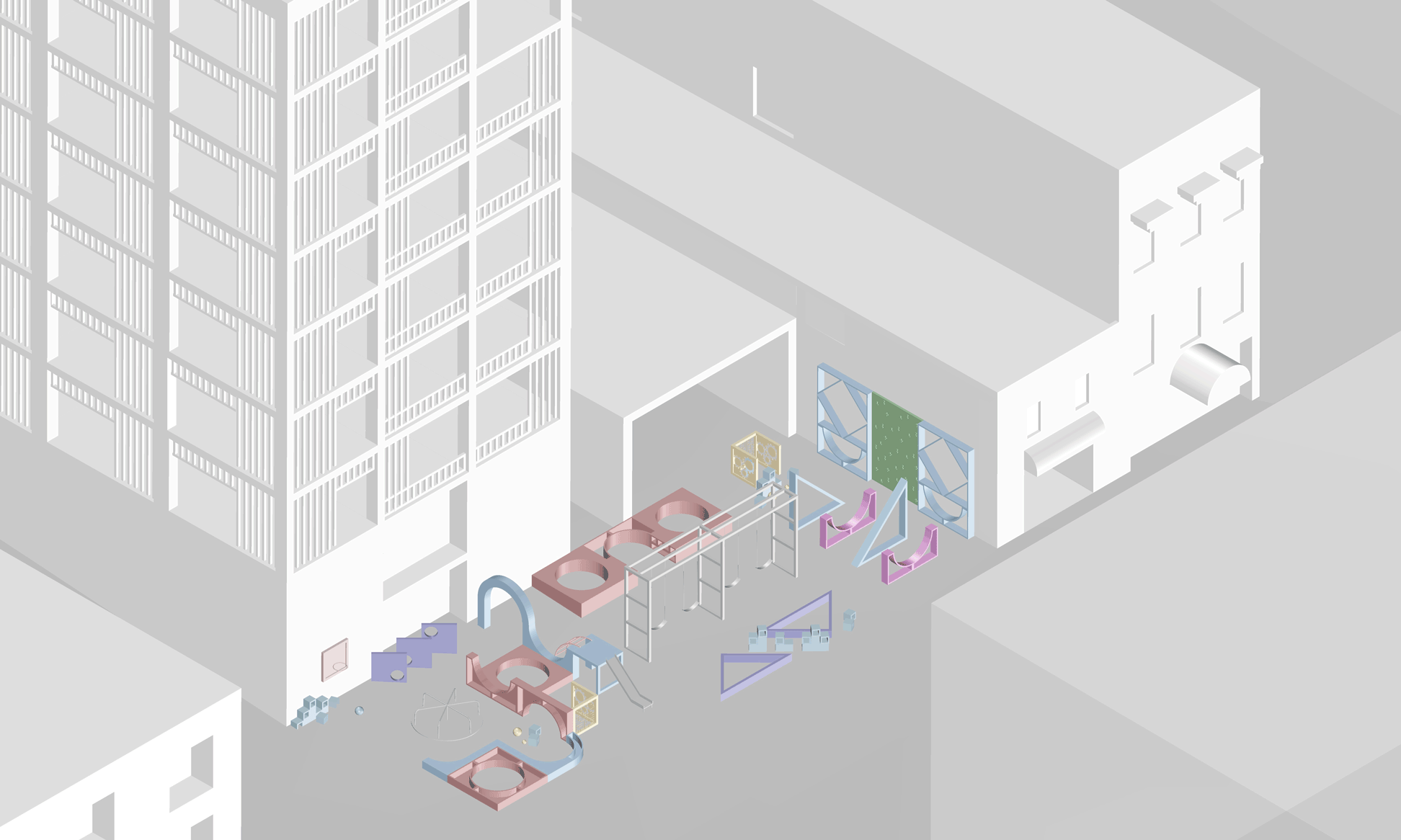

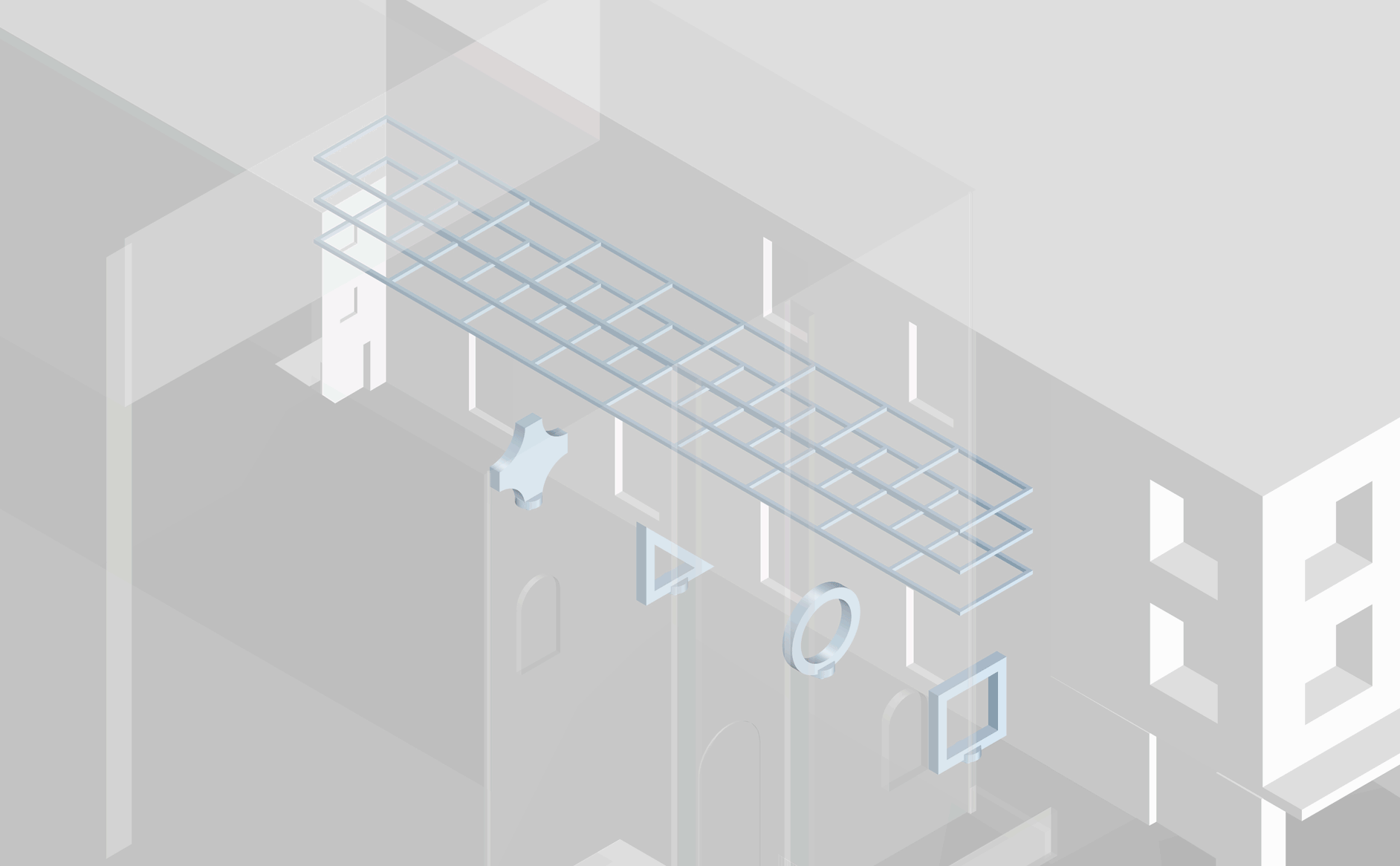


PLAYGROUND FOR YOUNGER KIDS (EMPTY LOT)
This playground includes a variety of equipment for different skill levels for younger kids. The design consists primarily of horizontal pieces and pieces that incorporate nature. Seating is dispersed throughout the space to allow adults to keep an eye on the kids.

PLAYGROUND FOR KIDS OF ALL AGES (EMPTY LOT)
This playground includes a variety of all the equipment. There are zones based off of age and experience level with an overlapping portion in the middle. There are horizontal elements for younger children and some challenging vertical pieces for climbing and playing for older kids.


PLAYGROUND AND SECRET VERTICAL GARDEN (ALLEYWAY)
This playground consists of space on the ground for younger kids to play and some challenging vertical climbing features for older kids. The space is designed to be a vertical garden with planters and treehouse like spaces.


PLAYGROUND FOCUSING ON RAIN AND WATER FEATURES (ALLEYWAY)
This playground is designed for all ages and a wide variety of functions. The design accommodates for a rainy season with a stream on the ground and a bath to collect water at the top of the structure.

BRINGING THE SPACE TO LIFE (MATERIALITY AND USE OF SPACE)
This collection fo drawings introduces materials and life to the playground. This displays the space for younger kids, older kids, and the vertical garden.









